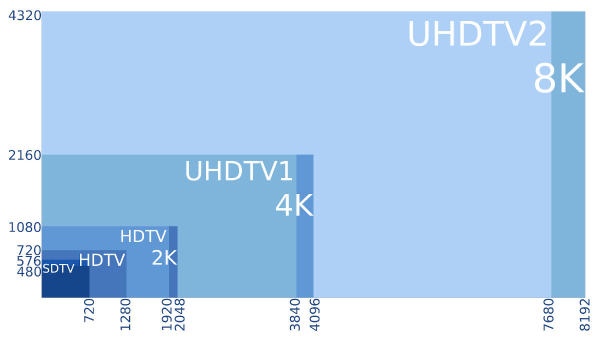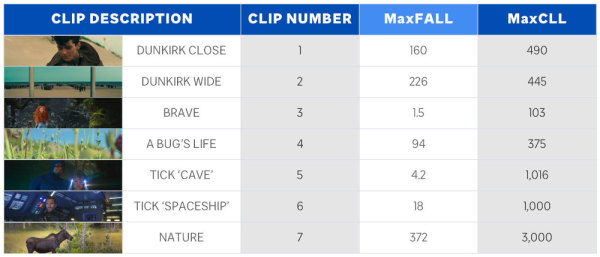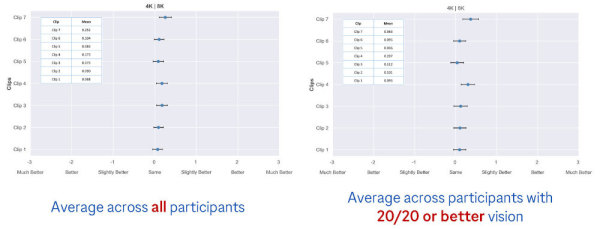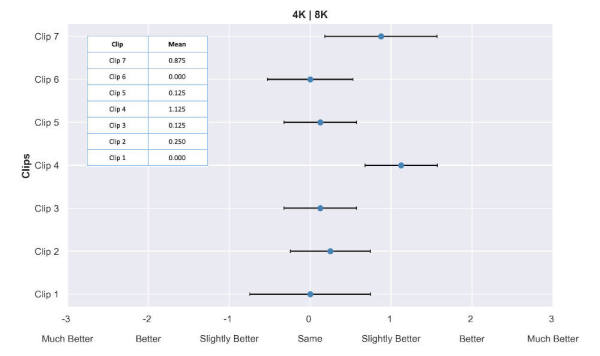[11:09 Tue,3.March 2020 by Thomas Richter] |
Major manufacturers such as LG, Samsung and Sony have unveiled a whole range of new 8K TVs at CES 2020 and are relying on them as drivers of future sales. Now Pixar, Amazon Prime Video, LG, the ASC (American Society of Cinematographers) and Warner Bros. have conducted a study on the fundamental question of whether viewers can even tell the difference between 4K and 8K resolutions.  8K vs 4K in comparison The experimental setup The new double-blind study compared seven excerpts from films as different as the Hollywood war drama "Dunkirk", a nature documentary, the animated films "The Big Crawl" and "Brave" and the series "The Tick", each in a version with UltraHD 4K (3,840 x 2,160) with one in UltraHD 8K (7,680 x 4,320), i.e. with 4x as many (i.e. 33,177,600) pixels. The material from Dunkirk was available as an 8K scan of the 70mm film, the animated films were played out in 8K and "The Tick" came from a RED 8K camera.  The test clips All clips were played out in the form of 8K HDR10 clips uncompressed in professional DPX format with 24 frames per second with 10-bit in BT.2100. These clips were then downscaled to 4K using Nuke and upscaled again in a cubic (1 pixel becomes 4 pixels) format for display on the 8K TV to be played back together with the "real" 8K clips without gaps. An 88" 8K-OLED TV (LG 88Z9) was used as the display for the test. The playback setup consisted of a Windows PC with an Intel 18-Core i9 CPU, an SSD RAID and an Nvidia 1080Ti-GPU. The system had to play back a video data stream of 3 GB/s due to the high resolution and lack of compression. Using a BlackMagic 8K interface card, the video was sent via four 12G-SDI connections to four  The Setup The study had 139 participants sitting about 2 meters away from the screen (the average distance to the TV at home according to ITU) in small groups arranged in two rows. The participants were subjected to a standard visual acuity test to determine how well they could see and then to include this factor in the final evaluation of the 4K/8K tests. They were presented with 4K and 8K clips of the same section in random order. The audience could then indicate whether they felt that one or the other version looked better (more precisely: they had the choice between "equally good", "slightly better", "better" or "much better"). The result on average of all participants, the 8K videos were found to be slightly better than the 4K versions (on average much closer to "equal" than to "slightly better") - the participants with average to better visual acuity hardly differed from the rest (39%) Only the participants with above average visual acuity rated two 8K clips clearly as "slightly better" than the 4K versions (the nature documentary and "The Big Crawl").  The result of all participants and those with average or above average visual acuity An astonishing number of participants rated the 4K version as better than the 8K version, but this is probably explained by the fact that these participants could not tell the difference and simply arbitrarily rated one clip as slightly better than the other.  The result of the participants with above average vision The interpretation of the results The study directors drew several conclusions from the results: -Under typical viewing conditions (2 meters away from an 88" screen), viewers cannot see a significant improvement in picture quality from 4K as opposed to 8K. -If a difference is noticed, it is strongly dependent on the image content: the nature shots stood out clearly in this respect during the test, probably because there was a lot of image detail (and the images were rather little moving). -Another factor was visual acuity and sitting distance: participants with very good vision who sat closer in the front row were more likely to notice a difference. It was not investigated whether the display technology makes a difference - i.e. whether the sharpness of an LCD screen is different from that of a normal LCD screen. deutsche Version dieser Seite: 4K vs 8K: Wer erkennt den Unterschied? Versuch gibt Antwort |





